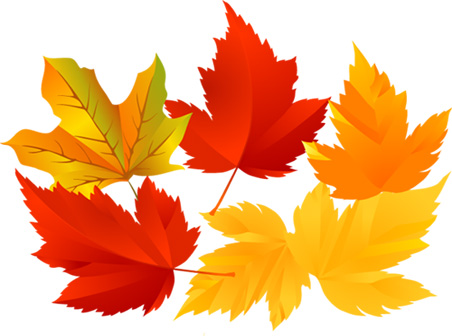Winsome Wisdom: The Idylls and Irritants of Autumn, by Steve Chappell
![]() Print this Article | Send to Colleague
Print this Article | Send to Colleague
Happy October, all. Those of you who have been reading my columns since it began in the late '90s as the Continuum Perspective know autumn is my favorite time of year. This is due primarily to the moderate temperatures and the transition to a multi-colored landscape.
 Every October, I eagerly anticipate the drive from Signal Mountain to Cherokee, North Carolina, along the Ocoee River. The route winds like a ribbon disguised as US Highway 64. It's the same route Ed and Francis Chappell traveled to Wrightsville Beach, North Carolina, for a family vacation. The scenery has changed very little since then, with the exception of Copperhill, Tennessee, which no longer looks like a barren desert.
Every October, I eagerly anticipate the drive from Signal Mountain to Cherokee, North Carolina, along the Ocoee River. The route winds like a ribbon disguised as US Highway 64. It's the same route Ed and Francis Chappell traveled to Wrightsville Beach, North Carolina, for a family vacation. The scenery has changed very little since then, with the exception of Copperhill, Tennessee, which no longer looks like a barren desert.
Another change is the time of year. During the late '50s, Dad’s Studebaker wound its way through the mountains of western North Carolina during early June, when the ample foliage was various shades of green. During October, the 99-mile stretch between Signal Mountain and Murphy is a spectacle not to be missed. In fact, add it to your bucket list.
Watching the leaves morph from greens into reds, yellows, oranges, purples, and browns also reminds me of those fall days at Baylor School in Maj. Luke Worsham’s ninth grade general science class. We learned about atoms and their components (neutrons, protons, and electrons) and about that life-sustaining chemical compound consisting of two gases (hydrogen and oxygen). We also learned about photosynthesis, which is the reason why the leaves change color during the autumn months.
Did you ever wonder why, for example, some maple leaves turn bright red while others turn orange or yellow? According to sciencemadesimple.com (and Maj. Worsham), here’s how it all goes down:
1. Plants turn water and carbon dioxide into oxygen and sugar in a process called photosynthesis, which literally means "putting together with light." A chemical called chlorophyll helps make the process happen, and is what gives plants their green color.
together with light." A chemical called chlorophyll helps make the process happen, and is what gives plants their green color.
2. As summer ends and autumn comes, the days get shorter. During winter, there is not enough light or water for photosynthesis. The trees will rest, and live off the food they stored during the summer. They begin to shut down their food-making factories, and the green chlorophyll disappears from the leaves.
3. As the bright green fades away, we begin to see the various colors, which have actually been in the leaves all along. We just can't see them in the summer because they are covered up by — you guessed it — green chlorophyll.
4. In some trees, like maples, glucose is trapped in the leaves after photosynthesis stops. Sunlight and the cool nights of autumn cause the leaves to turn this glucose into a red, orange, yellow, or purple color. The brown color, like oaks, is made from wastes left in the leaves.
And there you have it, folks! Another journey back in time to junior high school featuring a refresher course on the subject of botany.
But at this time of year, and this time in my life, I sure wish Maj. Worsham was still around to help me understand all these Medicare supplement plans...
Class dismissed!
 Every October, I eagerly anticipate the drive from Signal Mountain to Cherokee, North Carolina, along the Ocoee River. The route winds like a ribbon disguised as US Highway 64. It's the same route Ed and Francis Chappell traveled to Wrightsville Beach, North Carolina, for a family vacation. The scenery has changed very little since then, with the exception of Copperhill, Tennessee, which no longer looks like a barren desert.
Every October, I eagerly anticipate the drive from Signal Mountain to Cherokee, North Carolina, along the Ocoee River. The route winds like a ribbon disguised as US Highway 64. It's the same route Ed and Francis Chappell traveled to Wrightsville Beach, North Carolina, for a family vacation. The scenery has changed very little since then, with the exception of Copperhill, Tennessee, which no longer looks like a barren desert. Another change is the time of year. During the late '50s, Dad’s Studebaker wound its way through the mountains of western North Carolina during early June, when the ample foliage was various shades of green. During October, the 99-mile stretch between Signal Mountain and Murphy is a spectacle not to be missed. In fact, add it to your bucket list.
Watching the leaves morph from greens into reds, yellows, oranges, purples, and browns also reminds me of those fall days at Baylor School in Maj. Luke Worsham’s ninth grade general science class. We learned about atoms and their components (neutrons, protons, and electrons) and about that life-sustaining chemical compound consisting of two gases (hydrogen and oxygen). We also learned about photosynthesis, which is the reason why the leaves change color during the autumn months.
Did you ever wonder why, for example, some maple leaves turn bright red while others turn orange or yellow? According to sciencemadesimple.com (and Maj. Worsham), here’s how it all goes down:
1. Plants turn water and carbon dioxide into oxygen and sugar in a process called photosynthesis, which literally means "putting
 together with light." A chemical called chlorophyll helps make the process happen, and is what gives plants their green color.
together with light." A chemical called chlorophyll helps make the process happen, and is what gives plants their green color.2. As summer ends and autumn comes, the days get shorter. During winter, there is not enough light or water for photosynthesis. The trees will rest, and live off the food they stored during the summer. They begin to shut down their food-making factories, and the green chlorophyll disappears from the leaves.
3. As the bright green fades away, we begin to see the various colors, which have actually been in the leaves all along. We just can't see them in the summer because they are covered up by — you guessed it — green chlorophyll.
4. In some trees, like maples, glucose is trapped in the leaves after photosynthesis stops. Sunlight and the cool nights of autumn cause the leaves to turn this glucose into a red, orange, yellow, or purple color. The brown color, like oaks, is made from wastes left in the leaves.
And there you have it, folks! Another journey back in time to junior high school featuring a refresher course on the subject of botany.
But at this time of year, and this time in my life, I sure wish Maj. Worsham was still around to help me understand all these Medicare supplement plans...
Class dismissed!
